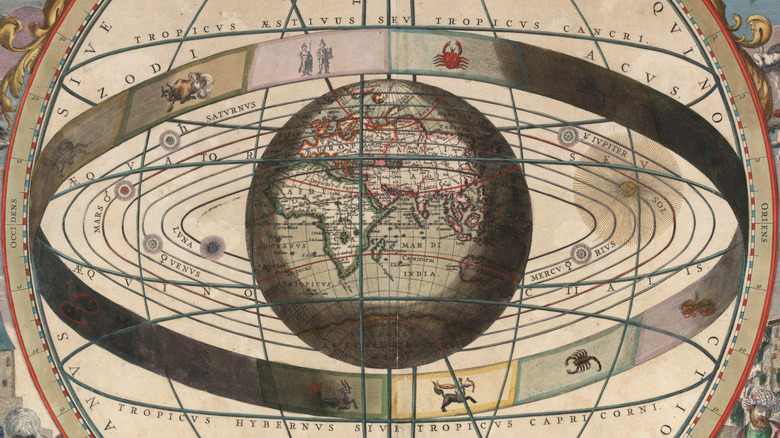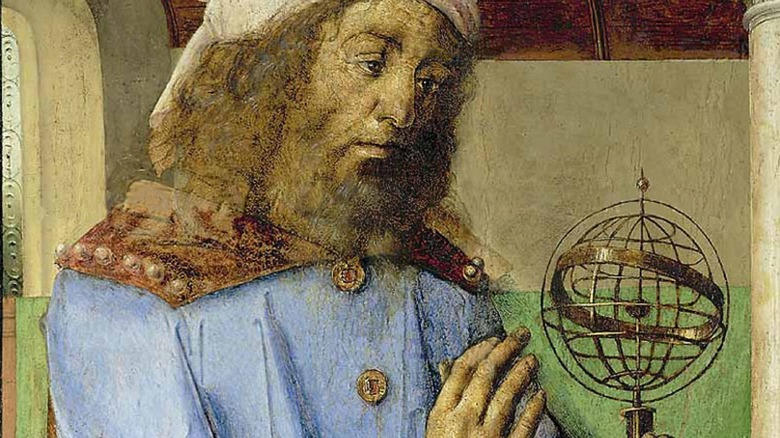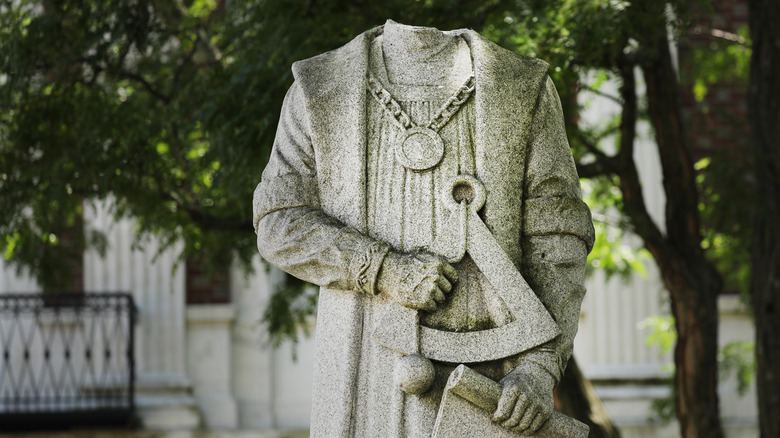Ptolemy's Map And Its Major Influence On Christopher Columbus
The story of Christopher Columbus and Ptolemy's map is one that has been shared across the centuries. Yet it's also a story of horror and bloodshed propelled by a thousand-year-old game of cartographical telephone.
More widely known as Ptolemy, Claudius Ptolemaeus knew nothing of Christopher Columbus (via Brittanica). Born in North Africa in A.D. 100 Ptolemy spent his life as a scientist, scholar, and thinker who wrote texts about math, astronomy, astrology, music, optics, poetry, and navigation. While his writing influenced hundreds of years of European and Islamic civilizations, we know nothing about his life beyond hints and clues from his writing, as Geography Realm notes.
Ptolemy's great gift was explaining the known world through mathematical terms. In that way, he was more of a documenter than a creator. Yet, that made his work no less important. His star charts aided in sea navigation. He made important observations in trigonometry, and his earth-centered map of the solar system prevailed for nearly 1000 years (via American Federation of Teachers). Ptolemy lived and worked in Alexandria, Egypt, which made the perfect home for a geographer, cartographer, and astronomer. The city had a rich history of astronomy and earth sciences. Better yet, Alexandria was a port hub. Ptolemy could collect facts, data, and stories from seafarers and foot travelers from far lands, according to Science Musings.
Ptolemy's mistake inspires Columbus
Christopher Columbus began his fateful explorations of the Americas, inspired by Ptolemy's maps, specifically from one of Ptolemy's great works, "Geographia," published around A.D. 150 (per Geography Realm). The eight-volume tome included everything known about geography during the Roman era. The first book held Ptolemy's writings, and the last seven were entirely atlases.
Western countries lost all knowledge of Ptolemy's works and the other texts in the Library at Alexandria for about 1,000 years. Re-discovered around 1400, including "Geographia," they were distributed and translated into Latin, by European scholars. However, what these academics passed around was a mere reflection of Ptolemy's original work. His books had been morphed by hundreds of years of hand-copying. Printed books wouldn't appear for another 700 years — and firstly in China, as History notes. However, only Ptolemy's prose was copied. The maps included in the "Geographia" of Columbus' time were more recent versions, re-created using Ptolemy's data and descriptions.
And, it was one of Ptolemy's greatest mistakes that inspired Columbus: the exaggerated size of Asia. Columbus used Ptolemy's accidental short distance between Europe's West Coast and Asia's Eastern Coast to persuade wealthy investors to fund his exploration (via Geography Realm). So as he set off, Columbus believed he was on his way to Asia, due to Ptolemy's calculations, and when he struck land that's where he thought he was, but it turned out he was in what we now know as the Caribbean (per American Federation of Teachers).
Ptolemy and Columbus: distinct legacies
Ptolemy left us with the use of latitude and longitude. His books shared geographic coordinates for every location he knew, more than 8,000. His meticulous and detailed documentation belie his desire to lay a foundation for future map-building and knowledge about the world (via Geography Realm). And, he did just that. We still use his curved projections, his strategy of putting north at the top of maps, and his method of marking the barriers between geographic features like coastlines and water, as Science Musings explains.
But, Christopher Columbus' story is much bloodier and more sinister. Under Columbus, the indigenous peoples of Hispaniola, the Taíno, were treated horrifically. Columbus quickly put the Taíno to work digging for gold under brutal conditions. Punishments included the removal of ears and beheadings. The Spanish raped Taíno women and sold children as young as 9 and 10 years of age into sexual slavery. This mistreatment led to mass suicides by at least 50,000 Taíno, as Vox notes. At one point, Columbus and his crews kidnapped and enslaved 500 Taíno to bring them back to Spain. During the voyage 200 died and the Spanish cast their bodies out into the Atlantic. Estimates put the Taíno population on the island of Hispaniola at 300,000 before Columbus arrived. By 1548, only 500 people remained (per Museum Facts). The result of Ptolemy's 1000-year-old error, in part, Columbus' journey to the Caribbean had deadly consequences that reverberate to this day.


